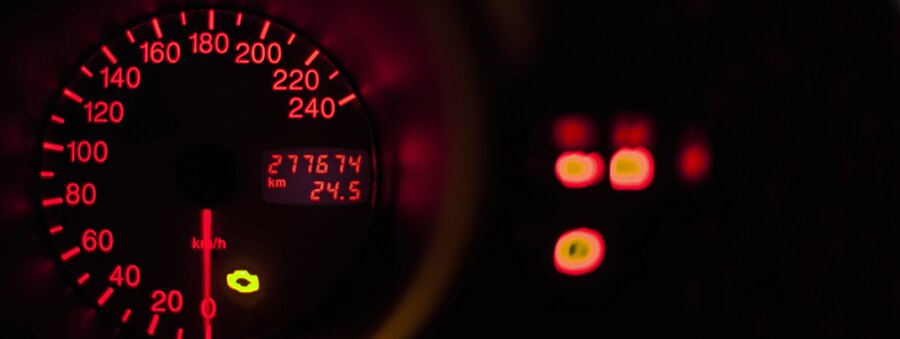Modern vehicles are equipped with various emission control systems to minimize the release of harmful pollutants into the environment. One crucial component of these systems is the evaporative emission control system, which prevents fuel vapors from escaping into the atmosphere. However, if there’s an issue with the evaporative emission control system, it can trigger a warning light on the dashboard. In this article, we will explore the common causes behind evaporative emission control system warning lights and provide troubleshooting tips to address the problem effectively.
Causes of Evaporative Emission Control System Warning Lights:
- Loose or Faulty Gas Cap: A loose, damaged, or missing gas cap is one of the most common causes of an evaporative emission control system warning light. The gas cap is designed to seal the fuel tank, preventing fuel vapors from escaping. If the cap is not tightly secured or has a faulty seal, it can trigger the warning light.
- Evaporative Emission Control System Leak: The evaporative emission control system consists of hoses, valves, and charcoal canisters that capture and store fuel vapors. Over time, these components can develop leaks or become clogged, impairing the system’s ability to contain the vapors. This can result in the activation of the warning light.
- Faulty Purge Control Valve: The purge control valve regulates the flow of fuel vapor from the charcoal canister to the engine, where it is burned during combustion. If the purge control valve malfunctions or gets stuck, it can disrupt the system’s operation and trigger the warning light.
- Sensor Malfunction: The evaporative emission control system utilizes various sensors, such as the fuel tank pressure sensor and the evaporative emission canister vent valve position sensor, to monitor system performance. If any of these sensors fail or provide incorrect readings, it can cause the warning light to illuminate.
Troubleshooting Evaporative Emission Control System Warning Lights:
- Check the Gas Cap: Start troubleshooting by inspecting the gas cap. Ensure it is properly tightened and securely in place. If you find any damage or a worn-out seal, consider replacing the gas cap with a new one that meets the manufacturer’s specifications.
- Inspect the Hoses and Connections: Carefully examine the hoses and connections of the evaporative emission control system. Look for signs of damage, cracks, or loose connections. If you notice any issues, such as leaks or loose fittings, they will need to be repaired or replaced.
- Clear the Error Code: If the warning light persists after checking the gas cap and inspecting the hoses, you can try clearing the error code by disconnecting the battery for a few minutes. However, keep in mind that this will also reset other systems, so it’s advisable to consult a professional or use a diagnostic tool to clear the code.
- Seek Professional Assistance: If the warning light continues to illuminate, it’s recommended to consult a qualified mechanic or technician. They have the expertise and diagnostic tools to pinpoint the exact cause of the issue. They may perform a smoke test to detect leaks or use specialized equipment to test the functionality of the purge control valve and sensors.
- Repair or Replace Faulty Components: Once the problem is identified, the necessary repairs or replacements can be carried out. This might involve fixing leaks, replacing damaged hoses, repairing or replacing the purge control valve, or addressing sensor malfunctions. It’s crucial to use genuine parts recommended by the vehicle manufacturer to ensure proper functionality.
Preventing Evaporative Emission Control System Warning Lights:
Regular maintenance and proactive measures can help prevent evaporative emission control system warning lights from appearing in the first place. Here are some preventive steps to consider:
- Maintain a Tight Gas Cap: Always ensure the gas cap is securely tightened after refueling. It’s a simple yet effective way to prevent vapor leaks.
- Conduct Regular Inspections: Periodically inspect the hoses and connections of the evaporative emission control system for any signs of damage or deterioration. Address any issues promptly to maintain the system’s integrity.
- Follow Recommended Maintenance Schedule: Adhere to the manufacturer’s recommended maintenance schedule for your vehicle. Regular servicing can help identify and address potential problems before they escalate.
- Avoid Overfilling the Fuel Tank: Overfilling the fuel tank can cause fuel to enter the evaporative emission control system, leading to issues. Stop refueling once the nozzle clicks off, indicating that the tank is full.
If you encounter an evaporative emission control system warning light, it’s essential to address the issue promptly to ensure compliance with emission standards and maintain optimal vehicle performance. By following the troubleshooting steps mentioned above and implementing preventive measures, you can diagnose and resolve the problem associated with the evaporative emission control system effectively. However, for complex issues, it’s always recommended to seek professional assistance to ensure accurate diagnosis and proper repairs.











